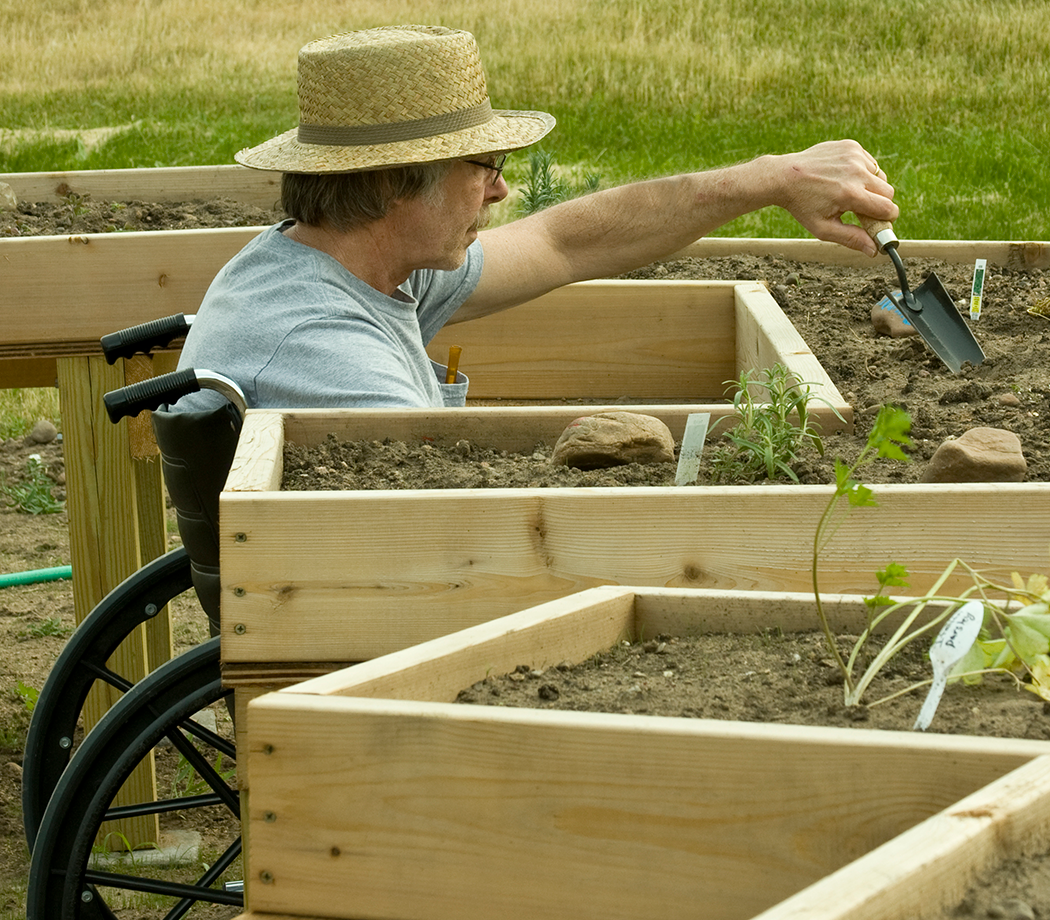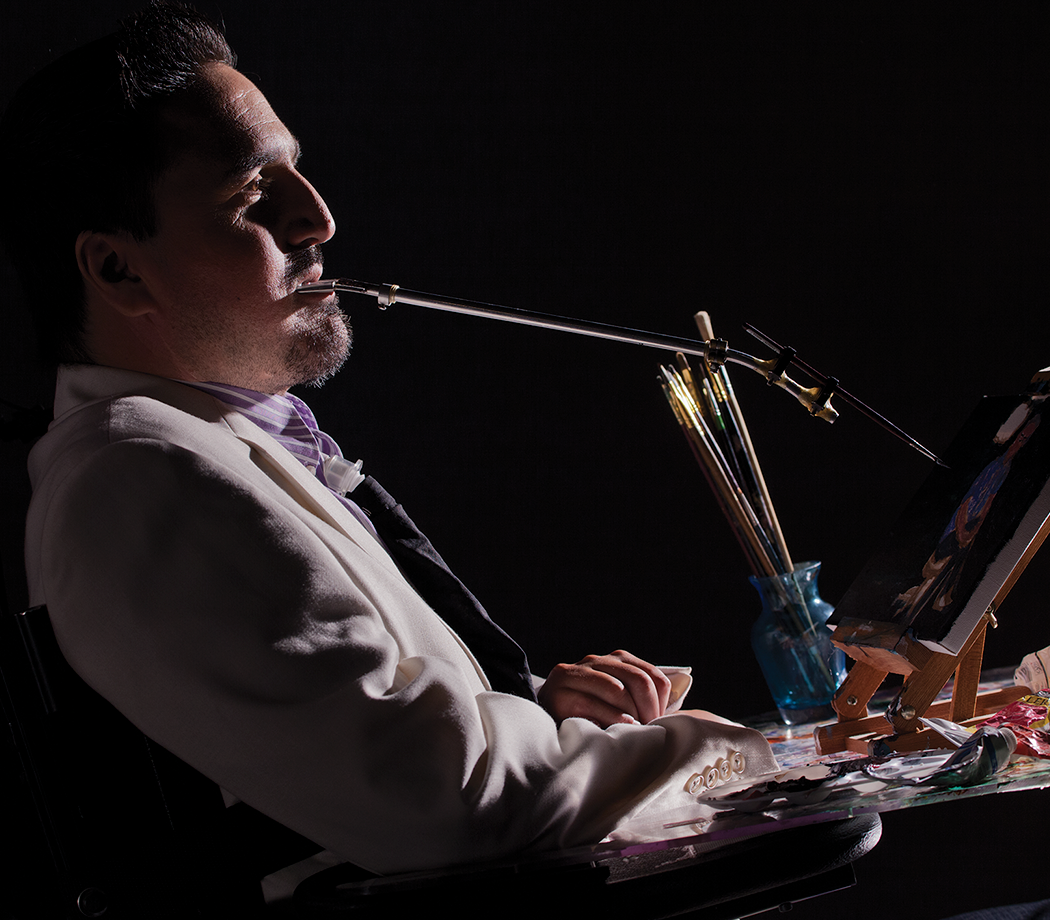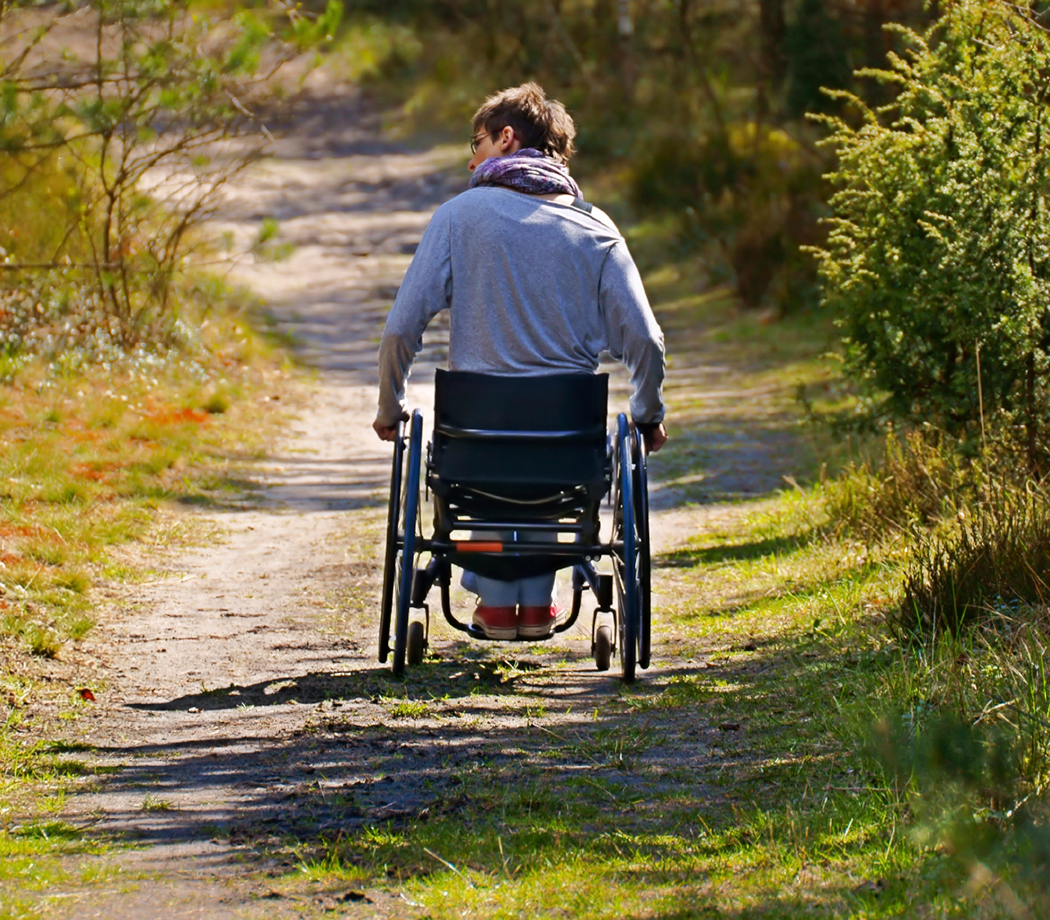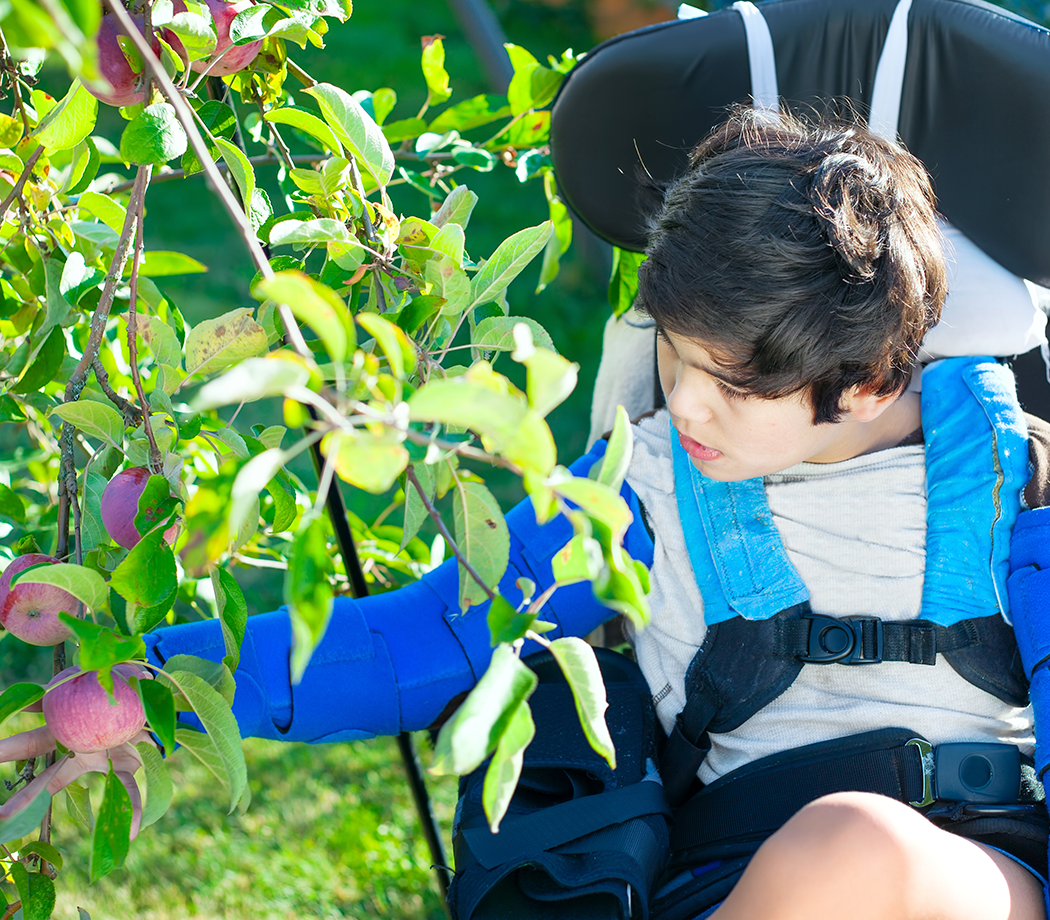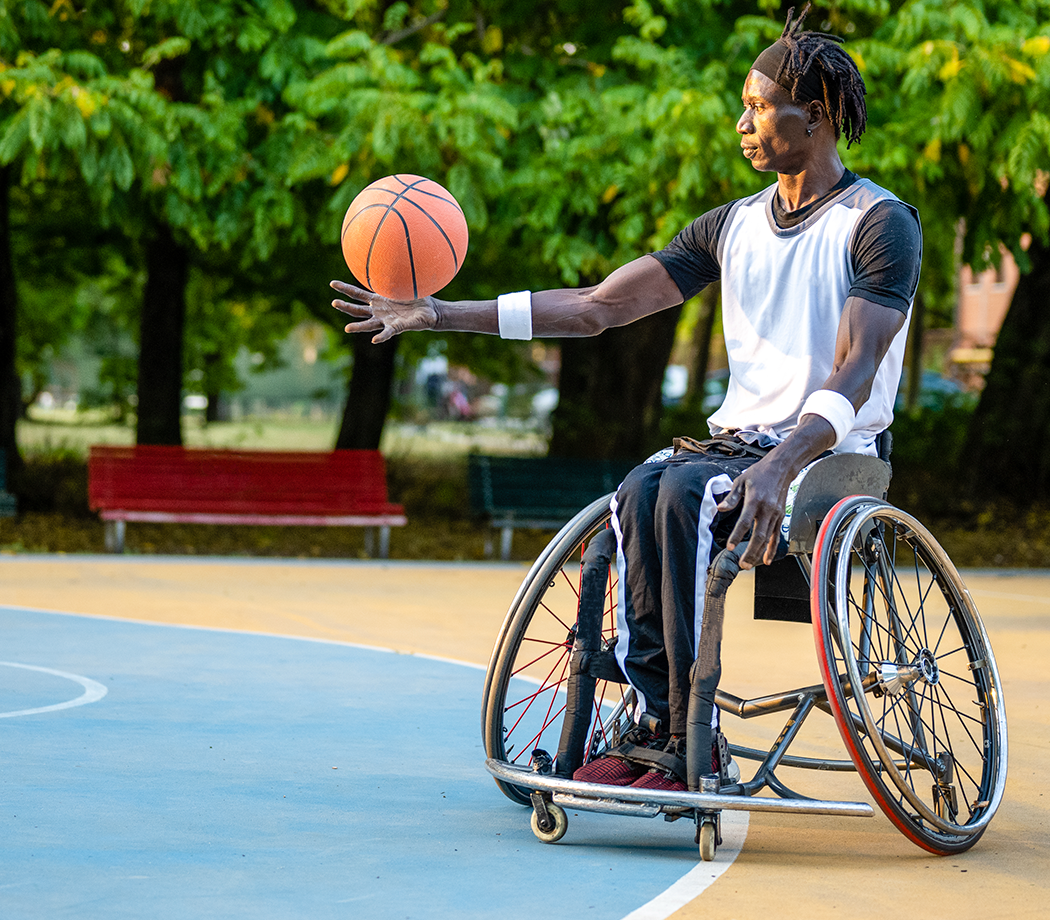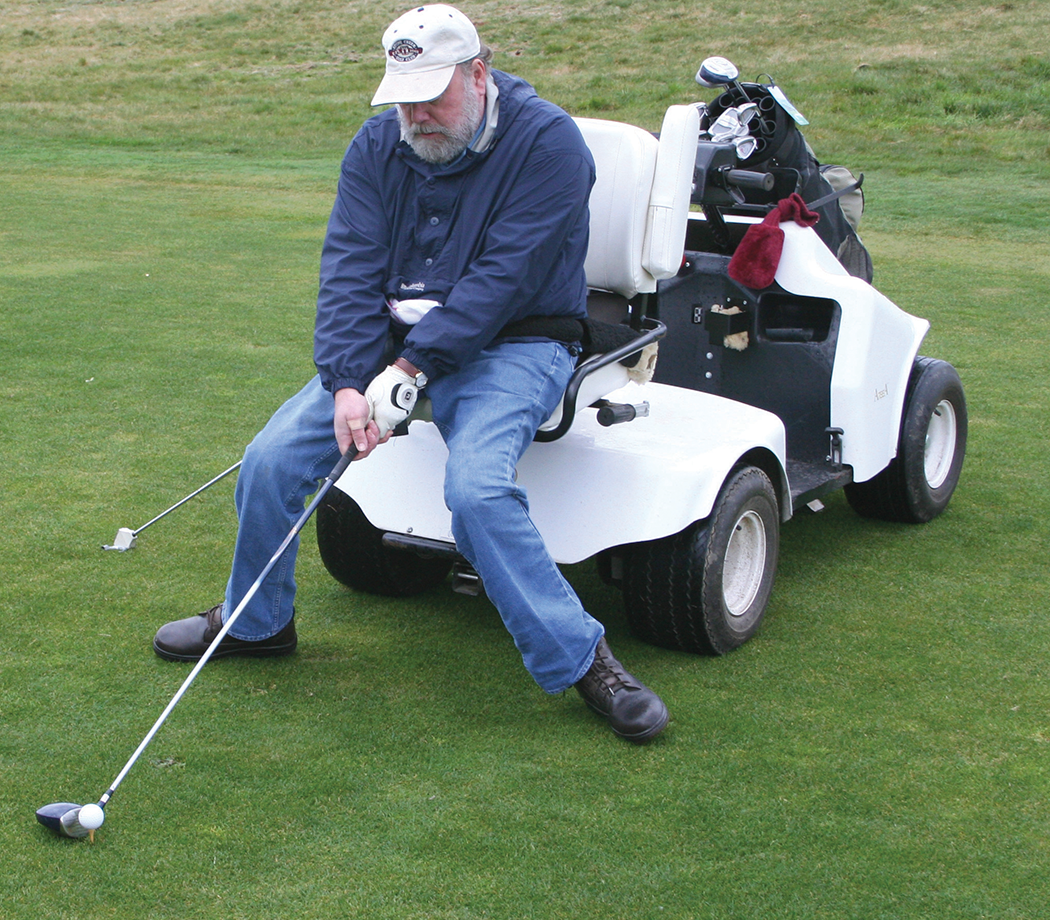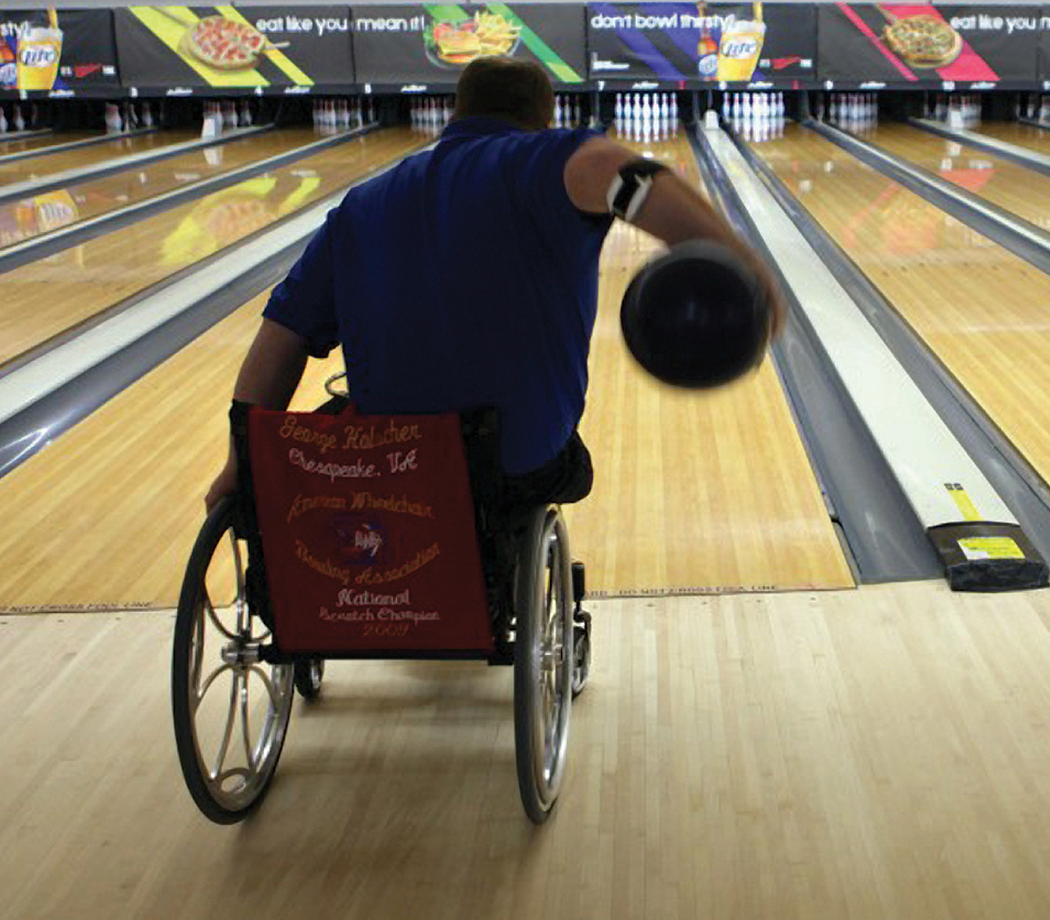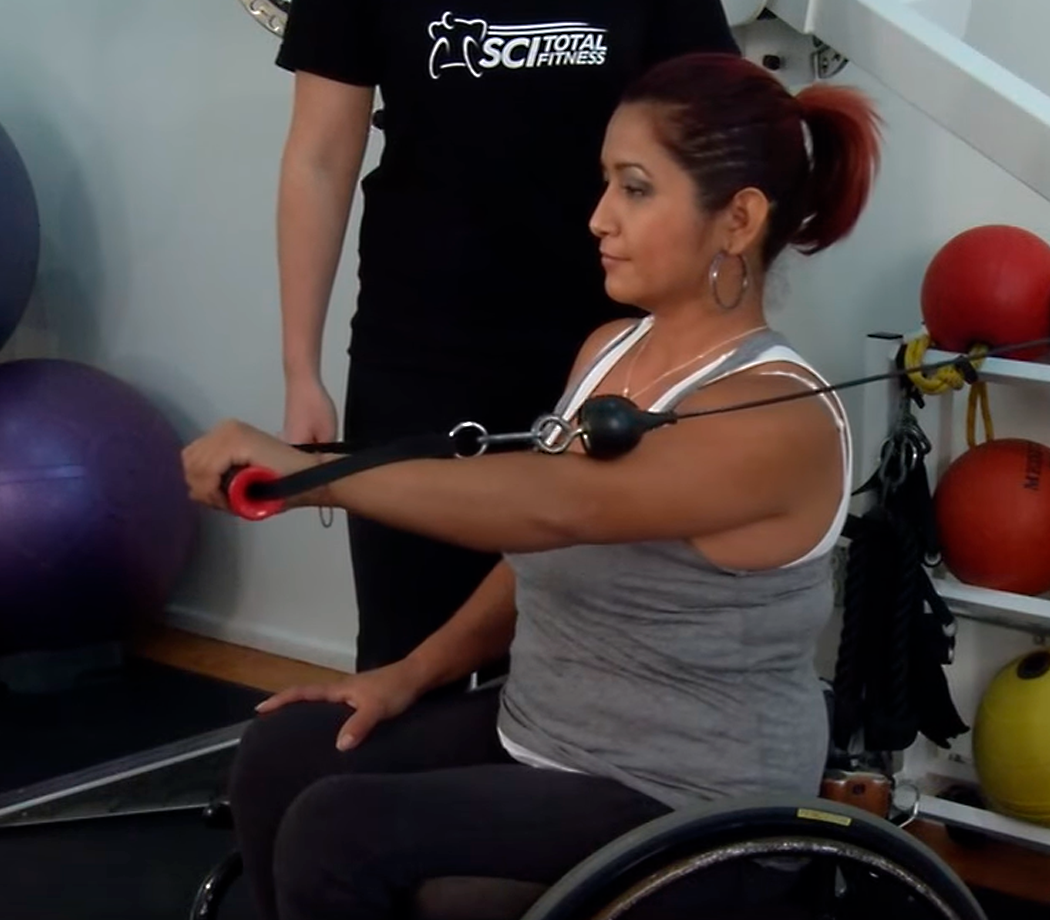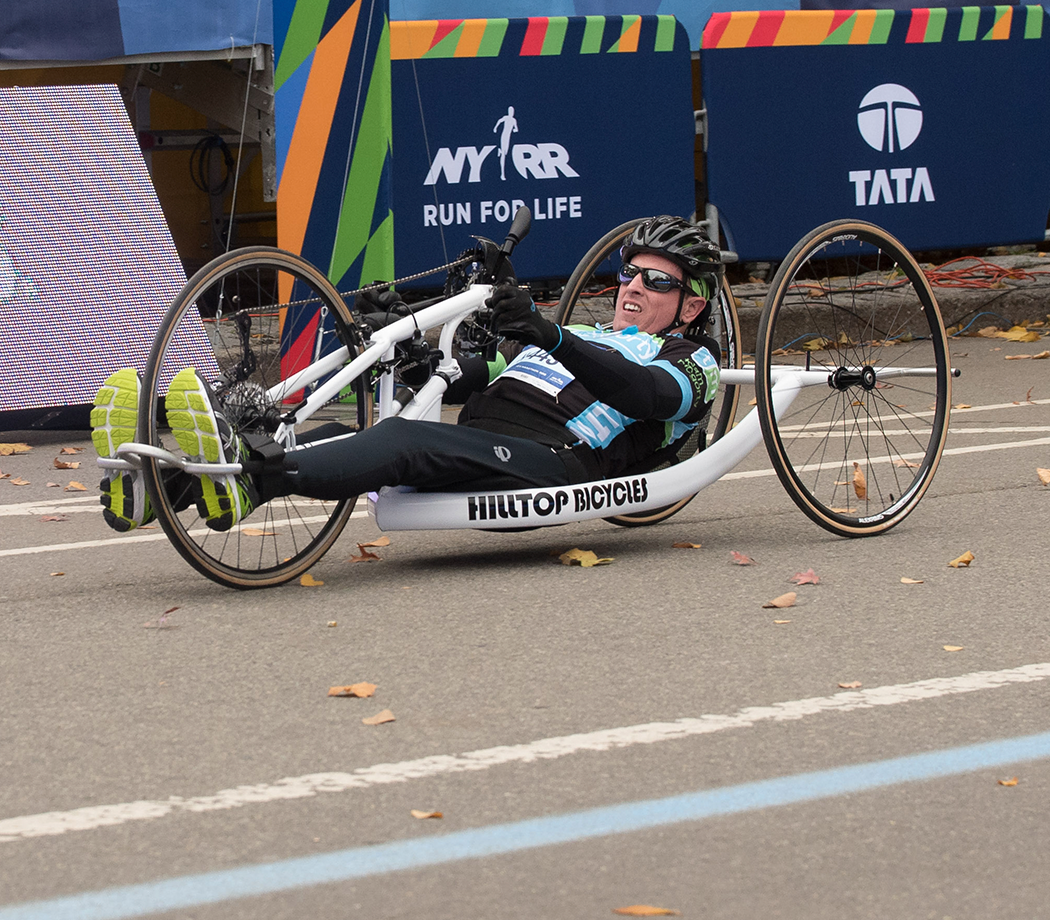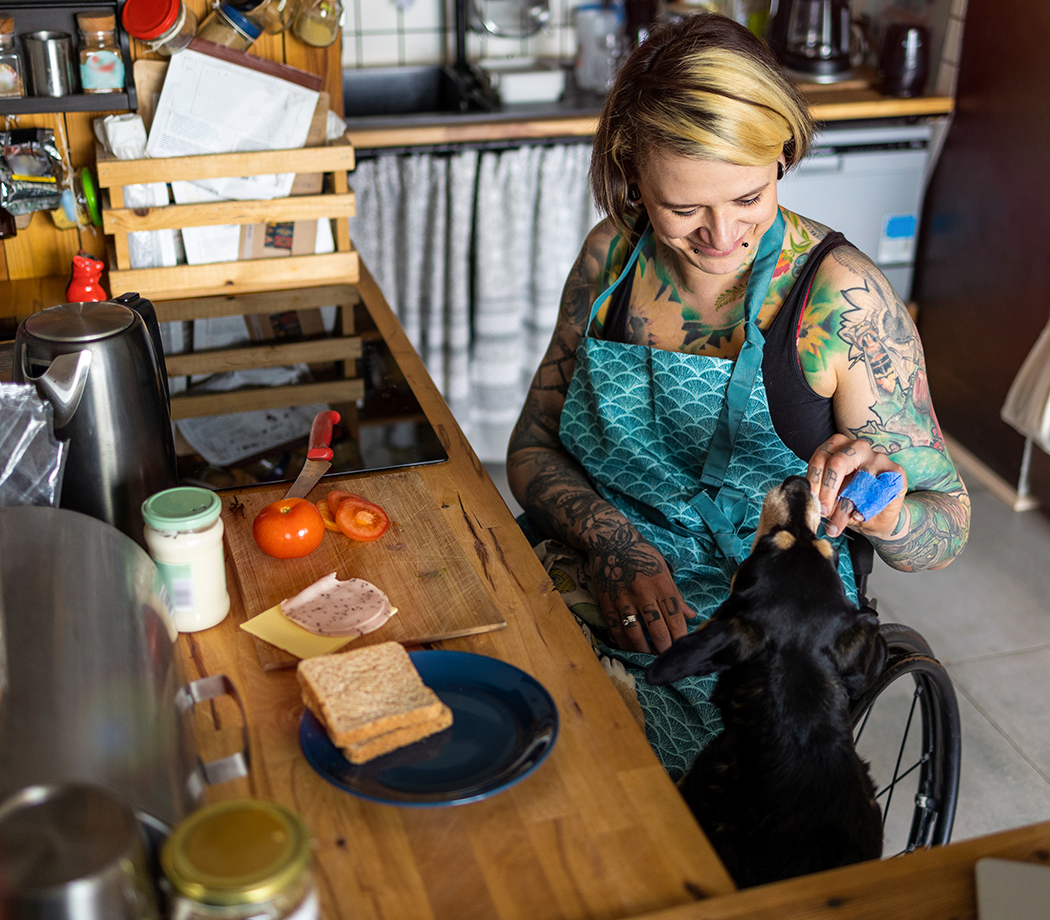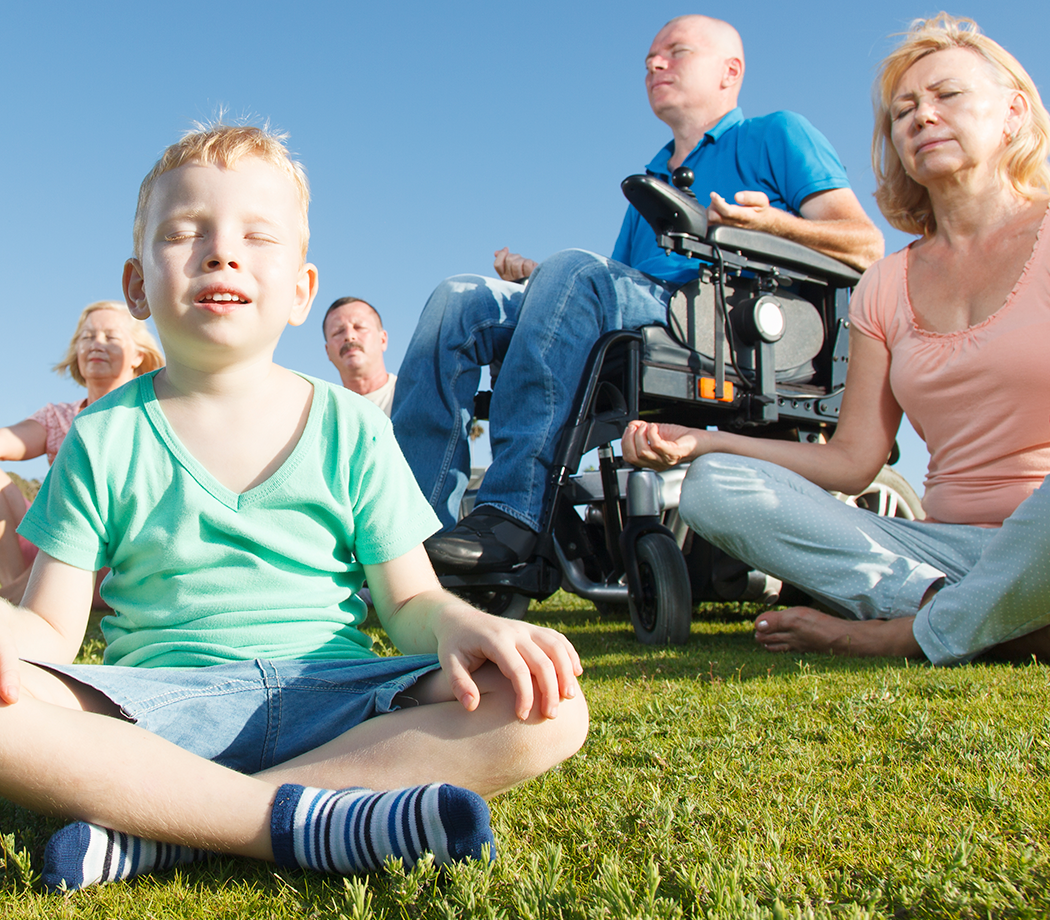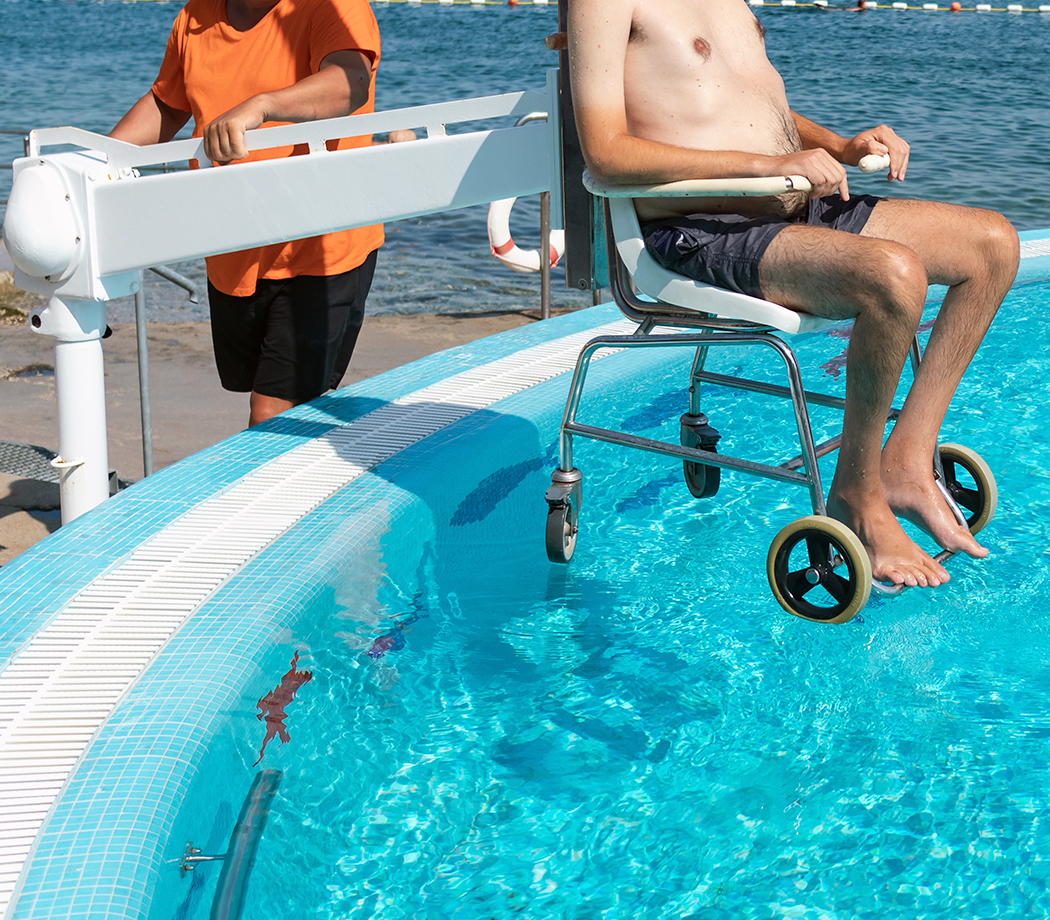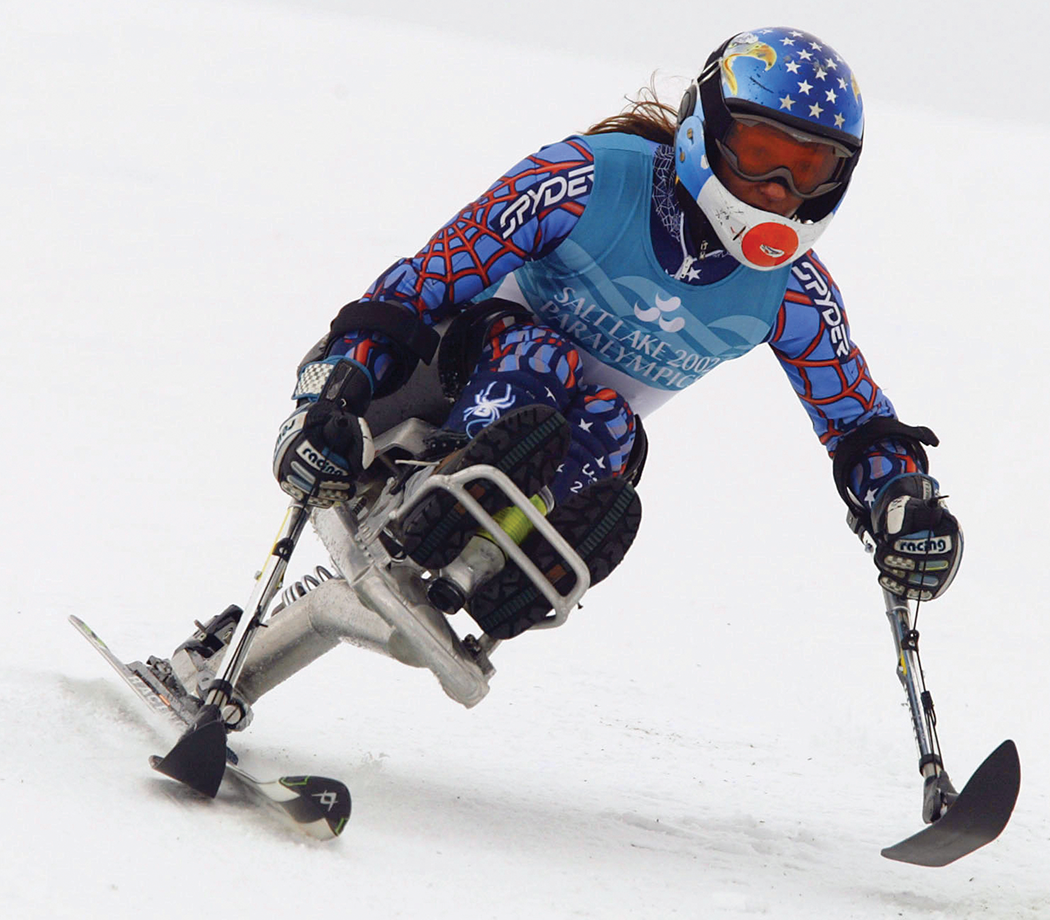Recreation Sports
Recreation. What relief to get away from our day-to-day routines, to engage in fun activities, sports and games with friends and family, or in solitude.
Paralysis is a ready excuse to stay indoors and inactive. But the benefits of escaping the ordinary, of being challenged, of exploring the boundaries of limitation, and sharing this with friends and family is all very fulfilling and meaningful.
The physical benefits of active living promote health and wellness, reduce stress and help us think more creatively. The social and psychological reasons add balance to life with disability. We need to do things that focus on activity and not limits.
Recreation and adventure enable people to explore themselves, to take risks, to get the blood going, to gain a fresh perspective.
Many recreational activities, sports and competitions are accessible. Here’s the real bottom line: No matter your level of function or your physical limitations, if you want to try something – anything – there’s almost always a way to do it.
Jump out of an airplane… hooked up to a ventilator? Been done. Climb the rock face of El Capitan in Yosemite, with just arm power? Done. Surf the waves off Malibu, with no hand or leg power? Of course.
Below is a list of some popular individual activities that for the most part can be shared with family and friends.
Billiards
This is a great game for wheelchair users. The rules and regulations are basically the same as in the stand-up game. Individuals with upper body limitations must stay seated during play and are allowed to use adaptive devices for shooting control.
Modified pool cues or a roller attachment at the end of a cue stick allow players with limited hand use to enjoy the sport and be competitive with the best players.
For more information, visit: World Disability Billiards And Snooker (WDBS).
Bowling
Wheelchair bowling, like basketball, emerged as part of social and physical rehab programs for disabled World War II vets. The sport is easy to learn and does not require enormous strength.
It is played just as the stand-up version, with the exception of special push tools and ball-drop ramps for bowlers with limited arm mobility. Special snap handle balls are available for those who can’t get a good grip on the ball.
To find out about leagues and adaptive gear, contact the American Wheelchair Bowling Association.
Camping
Camping is a great way to be close to nature, to simplify, to cut the electronic umbilical cords and conveniences we take for granted.
Getting away might mean car or motorhome camping within a designated site. It might mean getting off the beaten path and deep into the woods. Wheeling into the wilderness isn’t easy for people who are paralyzed, but it’s not impossible with a bit of preparation and determination.
Where to go? State and national parks are a good place to start. Be prepared and be creative. To get started, check with your state’s outdoor recreation or state parks agency. You may need to make reservations.
As mandated by the Americans with Disabilities Act, state and national parks generally have accessible accommodations, bathrooms and level ground. Progress toward accessibility continues but you can find many camp areas that are already accessibility friendly.
U.S. National Parks are visited by more than 275 million visitors every year. Includes 43,162 miles of shoreline.
Residents of the United States with disabilities can obtain a free Access Pass, a lifetime entrance pass to over 2,000 national parks, monuments, historic sites, recreation areas and wildlife refuges. The Pass also provides a 50 percent discount on fees for camping, swimming, parking, boat launching and tours.
Flying
By its very nature flight is restrictive – by gravity, of course, and by licensing agencies and cost, but not necessarily by paralysis. If a person has normal health and has either quick reflexes or a suitable alternative control, most likely he or she can fly.
Flying does not require great strength although good headwork is a must. Hundreds of paraplegics, quadriplegics and amputees have successfully flown over the years, even as commercial pilots, having proven their abilities to the FAA and other licensing authorities throughout the world.
Freedom’s Wings International, a New Jersey organization, has a fleet of adapted motorless sailplanes. Gliders are towed into the sky by a regular airplane and then released for a quiet ride back to the airport. When conditions permit, sailplane pilots ride the natural thermal currents to stay aloft for hours. People with disabilities can come along either as passengers or by joining the flight training program.
Gardening
Digging in the dirt, planting seeds and growing flowers or food is pleasurable and rewarding. Gardening provides exercise and mental stimulation. Many people claim it’s also therapeutic.
There’s an organization called the American Horticultural Therapy Association that promotes physical and mental health through gardens and plants. Gardening can relieve tension. With its clear cause-and-effect nature, it can foster a sense of expectation, of accomplishment, self-reliance and responsibility.
Moreover, with some adaptations (raised beds and special tools, for example), gardening can be obstacle-free. The Paralysis Resource Center library carries several books on accessible gardening.
Golf
Golf is quite adaptable to the seated player. Custom clubs and special carts, some with single-passenger swivel seats and tires that won’t damage the greens, open the game to players who have limited leg function.
Golf is growing in popularity among disabled players, not only because of equipment innovation but also because of the changes in law. The Americans with Disabilities Act (ADA) requires all public accommodations, including golf courses, to provide goods and services to people with disabilities on an equal basis with the rest of the general public.
Public entities, such as states and local governments, must make golf courses and other facilities accessible to people with disabilities and all new golf course facilities must be accessible.
The ADA also requires removal of architectural obstacles in existing facilities when “readily achievable,” or when it can be done without much difficulty or expense for that facility.
Before you show up at a golf club expecting an equal basis experience, check ahead. You may need to work with the management and perhaps enlist the help of organizations such as the United States Golf Association or American Disabled Golfers Association.
Handcycling
Handcycling really took off once the technology came of age with sophisticated three-wheel, multi-geared cycles. Hand cranking has become quite popular across the country and abroad, and for good reason. It’s fun, fast and family oriented. It’s great for fitness, too.
A rider can move the three-wheelers along at a steady 20 mph pace, enough to keep up with nondisabled bike riders. Many riders have hand-powered over the thin air of Colorado’s highest mountain passes, or even around the world.
Handcycling has emerged as an elite competitive sport, too. It’s included in the Paralympics and many major marathons. The handcycle is also used in triathlons for the cycling portion of the competition and in cycling events like century rides.
There are several variations on the hand-power theme. Some cycles clamp on to a standard manual wheelchair, with a chair-driven front wheel to more or less pull the chair along. Clamp-ons are best for cruising around the neighborhood.
Serious road travel or competition requires a trike: they are lighter and deliver more power to the drive wheel, have greater stability at speed, and offer much less wind resistance.
The big wheelchair companies Invacare and Sunrise Medical offer handcycle lines. For information about bikes see Freedom Ryder, Varna Handcycles or Bike-On.com.
Our video, created in partnership with Kennedy Krieger, goes into detail about the benefits of handcycling, and how it has evolved into one of the most popular adaptive sports for athletes and individuals at all levels.
Hunting
Very few limits to this sport. If you can exhale a puff, you can fire a gun. Here are some connections to hook up with others who like to shoot.
Racing
Wheelchair racing can take place anywhere there is running, on the track or on the road. The racing wheelchair has three wheels, one small one up front and two larger wheels that the person sits between; it looks like a mini dragster.
Almost all running road races from 5K to marathon length have wheelchair divisions. The Summer Paralympics features a wheelchair marathon, and numerous track races.
Riding
Horseback riding is an exhilarating recreation that’s doable for many people living with paralysis, using padding or specially made saddles and a mounting ramp.
While riding can be done simply because it’s pleasurable, for some people the activity is therapeutic. The rhythmic motion and warmth of a horse can be helpful, and riding can facilitate cognitive as well as sensory and motor development.
Moreover, it can help foster a sense of responsibility and self-confidence while reducing spasticity and improving strength, and stimulating good posture, balance and flexibility for more functional independence off the horse.
The equestrian event Dressage, where horse and rider perform a series of predetermined movements, has been included in the Paralympics since 1996. There are many riding programs across the United States that cater to disabled riders. The best source of information is the Professional Association of Therapeutic Horsemanship International.
Sailing
Sailboats can accommodate people with varying degrees of paralysis. There are boats that are quite accessible for the wheelchair sailor (a transfer box helps with the hardest part – getting aboard). In fact, there are boats that can be single-handed by people with no hand function whatsoever.
A sip ‘n puff control has been adapted to a fleet of boats called Martin 16s. These were originally designed to be “quad friendly,” with inspiration from Sam Sullivan, a sailor living with quadriplegia from British Columbia. These boats are affordable, comfortable, safe and accessible to anyone.
Another accessible boat called an Access Dinghy, which can also be controlled using a joystick, is available for rent at many sailing centers. Sailors are seated low in the boat for added stability. A servo-assist joystick can operate the electric winches and can be controlled by hand, foot, chin or any moving body part.
There are numerous sailing programs across the country that offer boats and instruction for people with disabilities. Check your local marinas; many programs are listed on the The United States Sailing Association (USSA) website.
Scuba
Scuba diving opens up a fantastic new world for those with living with mobility impairments.
With training and some assistance getting in and out of equipment, even people living with quadriplegia can enjoy scuba diving, and perhaps the clear, 85-degree water of the beautiful reefs of the Caribbean.
There are dive programs all over the United States that specialize in getting disabled divers trained and certified. There are tour companies that target the wheelchair diver, and there are even resorts in such exotic places as Bonaire in the Caribbean that offer fully “walk ‘n roll” accessible dive vacation packages.
Many divers have been trained by instructors certified by the Handicapped Scuba Association (HSA), a California nonprofit that’s been running scuba and underwater education programs for nearly thirty years. HSA bases diving proficiency on one’s ability to assist another diver in the water.
- Level A divers are certified to dive with one other person
- Level B diver must dive with two other non disabled divers
- Level C divers require two dive buddies and one must be trained in diver rescue.
The Cody Unser First Step Foundation also supports a robust scuba program and even offer expense-paid trips to wounded military veterans to get certified in scuba diving.
Skiing (Alpine)
This is a sport that’s been well adapted for people with disabilities, thanks to technology. Depending on one’s level of function, there are three ways a person can get from the top of the mountain down the snowy trails to the bottom.
At the highest end of the tech scale is the mono-ski, best for those with good upper body strength and trunk balance. The skier sits in a molded shell mounted to a frame above a single ski with a shock absorber linking the frame to the ski. Two outriggers are used for balance and turning.
Mono-skiing closely resembles stand-up skiing — the skier can become highly skilled, carving turns in tight formation and taking on the deep and the steep. Ski all day without anyone’s help: The mono-ski self-loads onto the chairlift.
The bi-ski, a bucket seating system similar to the mono ski, sits atop two heavily shaped skis and can be balanced with attached or hand-held outriggers. Bi-skis are used by individuals who have more significant physical limitations and are tethered or skied from behind by an instructor.
The sit-ski, akin to a toboggan, works for people with even more significant limitations. Those with some hand function can steer the sit-ski with short ski poles and by leaning. The sit-ski is tethered to an instructor.
There are many disabled ski programs across the United States:
- National Sports Center for the Disabled
- Breckenridge Outdoor Education Center
- National Ability Center
- Alpine Meadows
- Adaptive Sports Foundation at Windham Mountain
- Paralympics
Skiing (Cross Country)
This manner of sit skiing imitates the experience of hiking in the wilderness and is a great aerobic and strength workout. Cross country sit skis have molded or canvas seats mounted on frames that are simple and lightweight, creating more independence.
The frames are attached to two cross country skis for snow skiing or a mountain-board for summer trails. The skier propels along the course using cross country ski poles that have straps to support any limited hand function.
There are no chair lifts to ride, no tickets to buy, and this sport will really work your muscles.
Tennis
Wheelchair tennis is played with the same rules as stand-up tennis, except the wheelchair player is allowed two bounces of the ball. Decent wheelchair players can actively compete against stand-up players, making this one of the best activities to share with friends and family.
In wheelchair tennis, the player must master the game as well as the wheelchair. Learning mobility on the court is exciting and challenging, and it helps build strength and cardiovascular fitness.
The competitive side of tennis is robust and international in scope. Tennis is also a Summer Paralympic sport. Check out the International Tennis Federation.
Tennis (table)
Not your daddy’s ping pong game. This is a fast and fun indoor/outdoor option. For information on competitive action (this is a Summer Paralympic sport), contact the USA Table Tennis organization.
Triathlon
The sport of triathlon is expanding for people with disabilities. Triathlon distances include the shorter course (half mile swim, 12 mile bike, 3.1 mile run), or the longer Ironman course (2.4 mile swim, 112 mile bike, 26.2 mile run). The adaptive division completes the same courses.
The 2016 Summer Paralympics will debut the triathlon event with the Olympic distance of swimming, biking and running. Sit-down athletes use a handcycle for the bike and a racing wheelchair for the run portions of the Triathlon.
Water Skiing
Water skiing is a terrific heat-beating summer sport that’s been adapted so that skiers of almost all abilities can participate with family and friends.
The sit skis are varied in width of 10 to 15 inches, depending on the skier’s ability. Some skis have outriggers or short ski tips attached to either side of the sit ski for balance. The towropes have a modified handle so individuals with hand disabilities can hook up to a boat and thrill to the speed and wake-crashing fun of water skiing.
Skis are available commercially and many have been added to recreation programs in many communities across the country.
Water ski tournaments for skiers with mobility limitations include slalom, tricks and jumping events. Competitions are organized by the Water Skiers with Disabilities Association (WSDA), a division of USA Water Ski, the national governing body for the sport in the United States. WSDA promotes the recreational aspects of the sport with clinics, teaching materials, equipment development and by way of a network of water ski resources.
Weightlifting and Bodybuilding
Technically, it is not hard to adapt lifting weights for people with lost function due to paralysis. The activity has clear benefits for fitness but lifting has also emerged as a very competitive activity at the international level. Check out powerlifting under the Paralympics section at www.teamusa.org.
Wheelchair bodybuilding has come a long way with numerous competitions across the U.S., and internationally, even sporting a professional division. Check out the International Federation of Body Builders.
Resources
If you are looking for more information or have a specific question, our Information Specialists are available business weekdays, Monday through Friday, toll-free at 800-539-7309 from 9am to 8pm ET.
Check out our repository of fact sheets on hundreds of topics ranging from state resources to secondary complications of paralysis.

